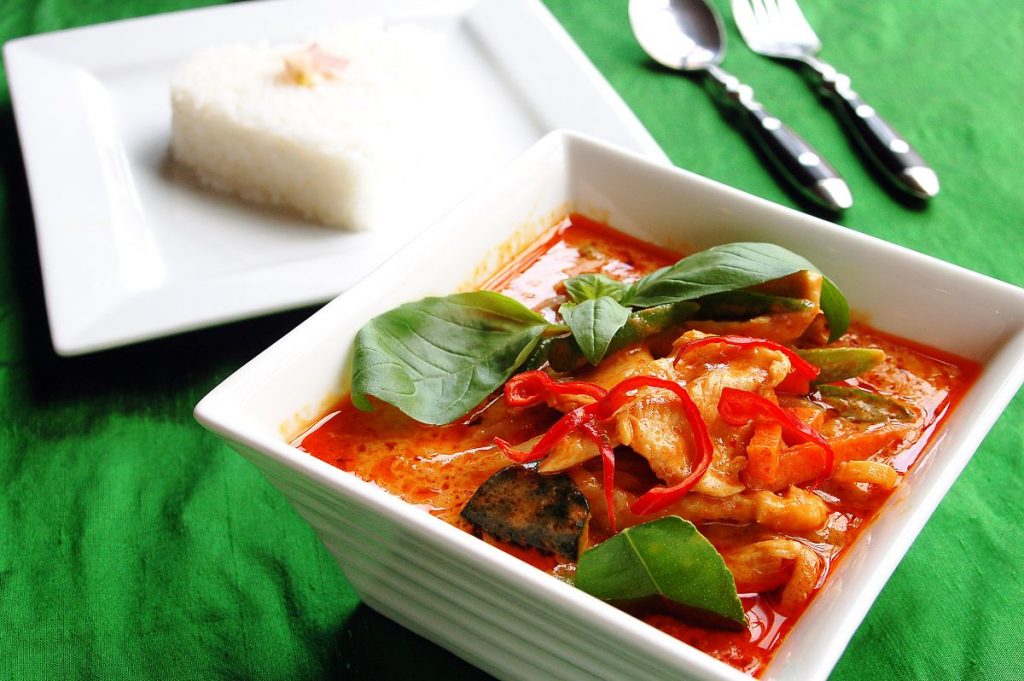Going on a trip to Asia can be one of the most rewarding travels you can go to. Maybe you’re considering solo traveling to Japan or exploring the streets of Indonesia. But maybe you can try going somewhere spicier. Why not plan a trip to Thailand?
Thailand is among the most popular travel destinations in Southeast Asia. With its idyllic beaches, lush forests and breathtaking architecture, it’s not hard to see why 39 million international tourists visited Thailand in 2019.
But how well-prepared are you for the stunning taste sensations that are Thailand’s meals and condiments? Are you ready to eat at a Thai restaurant without making a fuss?
This quick guide is perfect for travelers to familiarize yourself with Thai delicacies and dining customs.
Best Thai Delicacies
Forget everything you know about Thai food from restaurants abroad. Their authentic equivalents are richer in flavor and more robust with spices.
Here are some of the best Thai delicacies you should eat when you travel to Thailand.
Tom Yum Goong
Possibly one of the spiciest meals you can encounter in Thailand, tom yum goong is made from the most Thai of Thai ingredients. This spicy shrimp soup combines rich lemongrass, spicy chili, zesty lime leaves and lots of Thai fish sauce. The prawns and shrimps are stewed in this fragrant concoction and served with mushrooms or coconut cream for extra creaminess.
Pad Thai
The quintessential Thai food, you’ve probably encountered its foreign versions. The real deal is a lot more vegetarian than your standard fare and sweeter to boot. The fried noodles are sautéed with either shrimp or chicken and smothered in sauce, basil and lime juice. Pad Thai’s topped off with a healthy sprinkle of brown sugar, chopped peanuts and chili.
Khao Pad
Khao pad is ubiquitous in Thai culture, the equivalent to a quick meal eaten on the go. It’s a meal that consists of rice stir fried in fish sauce and assorted condiments, mixed with chopped onions and whisked eggs. Khao pad is also very customizable, and you can choose what condiments are liberally dumped atop it, such as fried shrimps, limes and sliced cucumbers.
Scrumptious Thai Condiments
Thailand’s cuisine relies on the boldness of the flavors in its condiments. Unlike in Western culture, the cook won’t be offended if you use a lot of condiments when receiving your meal. But before you dust your meal with something from the rack, here’s a quick guide to the most common and delicious Thai condiments.
Kapi
Kapi is a thick, salty paste made from grinding up fermented shrimp. It’s comparable to the Filipino sweet and spicy bagoong. This popular condiment is used to give soups and curries an extra seafood flavor and distinctive savory aroma.
Ground Peanuts
Ground peanuts give pad thai and other dishes a distinct nutty aroma and some extra crunch. Either served as a fine powder or in crunchy pieces, it adds an interesting textural aspect to Thai cuisine. However, if you’re allergic to peanuts, make sure to confirm the presence of this delicious condiment before digging in.
Nam Jim Gai
Nam jim gai is a combination of crushed garlic, sugar and vinegar, along with a lot of red chili. It’s a popular and tasty dipping sauce, melding sweet and sour seamlessly in its orange swirls. In Thai cuisine, you can dip fried chicken and fried spring rolls in nam jim gai for an extra flavorful bite.
Nam Prik Pao
If you want to make your Thai soup more savory, then reach for the nearest jar of nam prik pao. This thick paste is uses palm sugar mixed with oil, as well as crushed chilies, garlic and onions. The paste is both sweet and spicy and can added to a lot of meals for an instant flavor burst.
5 Thai Dining Customs to Remember
Like any other country, Thailand has its own dining customs. If you don’t want to inadvertently embarrass yourself or your host, here are some of Thai dining etiquettes you should keep in mind when eating in this country.
Mind the Seating
In the West, the host sits at the head of the table and the guest of honor sits to their right. In Thailand, with their emphasis on communal meals, the host sits in the middle of the table, so they can be at the heart of the meal. The guest of honor is seated opposite them to facilitate conversation. Seniority also determines who gets to sit first, whether that’s by social position or by age. Follow the lead of your Thai eating companions.

No Chopsticks
No, Thai people don’t use chopsticks unless they’re eating Chinese food. In Thailand, the main eating implement is the spoon, with the fork used to manipulate the food. You should also hold the spoon in your main hand, usually the right hand. Try not to use the fork to eat.
Keep an Eye on Drinks
You’re not supposed to fill your own glass. Instead, you should keep an eye on the glasses of the people near you. If their glass is less than half-full, you are obligated to fill them right up or else you will lose face. Don’t worry, your neighbors are also expected to keep your glass full.
Traveling to Thailand can be a magical experience, especially when you have a greater appreciation of their cuisine. Knowing their food and their condiments will make it easier to enjoy each morsel that passes through your lips on your visit to this enchanting country.

